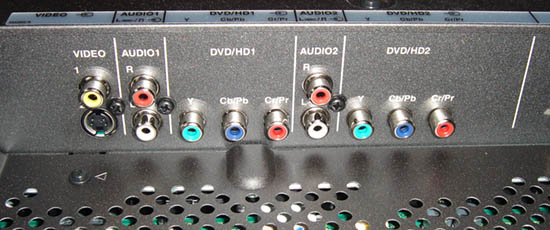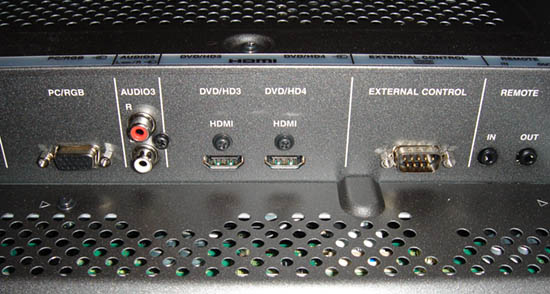Introduction
The 42XR4 is NEC's second try at a 42 inch HDTV plasma (XGA resolution =
1024 by 768), and a quite interesting display for me to test.
Traditionally, NEC Plasma Display Panels (PDP) focused on industrial markets
like exhibitions, airports, fast food restaurants, etc. They looked like an
industrial display - a simple grayish or silver bezel - and behaved like it
too.
Their features allowed one to set up the PDP in "retina
burn" mode that would actually compel one to wear sunglasses when too close
to the display. This is in complete contrast with PDPs like Panasonic or
Pioneer who targeted home theater audiences, forcing the displays to be a
bit more protective of the panel from misuse.
Because the panels were intended to be in use primarily in bright
environments, NEC PDPs were designed to be bright, with far less emphasis on
contrast ratio and black levels.
NEC plasma facilities were purchased by Pioneer last year, and the factory
now produces panels for both companies. Pioneer apparently had the idea that
NEC would continue to concentrate on the industrial markets, while Pioneer
could quietly center on the consumer business.
The NEC 42XR4
The first thing one sees when first viewing the 42XR4 is that NEC has
completely turned around and changed their PDP business strategy. The
display has deeper blacks than any previous NEC plasma. It is surprisingly
BLACK.
Another big surprise is the outer bezel design, which
is more stylish than any other NEC display – a thin silver stripe
surrounding a stylish black bezel. NEC finally discovered that consumers
often weigh in the look and style of the display when making purchasing
decisions.

The deep blacks measured quite high:1200:1 on the panel
itself, translating to roughly 4000:1 in "plasma manufacturer marketing
speak", owing much of the contrast ratio to the deep blacks, rather than
brighter whites.
Blacks are a really tough nut to crack for flat panel displays, but dark
grays are also a major issue. For example, 10,000:1 panels usually do blacks
(0 IRE) quite well, but fail miserably with dark IREs (< 20IRE) – usually
tinting greenish or red and producing a grainy and unacceptable image. When
shopping for panels, one should always try to see how the panel behaves with
very dark grays and blacks, preferably in a dim or no light environment. In
any case, this is not the case with this panel, which produced quite
balanced grays even with very low IRE levels.
However, this does not come without a price. The display flickers and grains
quite dramatically on normal content. This is a side effect of the "time
modulation" process that plasmas use to produce mid-tones. A plasma pixel
can only be turned on or off, it cannot produce intermediate shades like an
LCD can. To produce those intermediate shades, plasma pixels blink, e.g.,
turned on roughly 50% of the time to produce 50% of a particular shade. The
eye filters this blinking (in theory), and this produces a "time modulation"
version of mid-tones.
This technique is very complex and requires complex
timing and electronics to work correctly. A change in the blinking behavior
can cause increased grain and video noise on the image. Both grain and noise
are visible on the 42XR4. At a distance of about 7 feet, I can still see
this noise, but beyond that distance, the issue slowly disappears. If you
are planning on using the display at a smaller viewing distance, I would
recommend against it.
Connectivity wise, the 42XR4 is somewhat different from previous NEC models
like the 42XR3 or 42VR5. Gone are the old 5xBNC RGBHV connections, and these
are replaced with a single VGA connector (which can double as a SCART/RGBcvS
through a special cable or adapter). The display contains two component
inputs, a composite and S-Video input, and two HDMI connectors. There are
also several sets of audio inputs (for such things as connecting a DVD
player with a DVI output where the audio has to be connected separately).


Each input includes a stereo RCA connection for audio,
whereas the display can decode the audio stream from the HDMI inputs (I
believe this is restricted to stereo only), or use the stereo input for
input 3. Of course, none of these audio inputs are serious replacements for
routing the audio directly through your receiver, and such a connection is
strongly discouraged.
Click Here to Go to Part II.